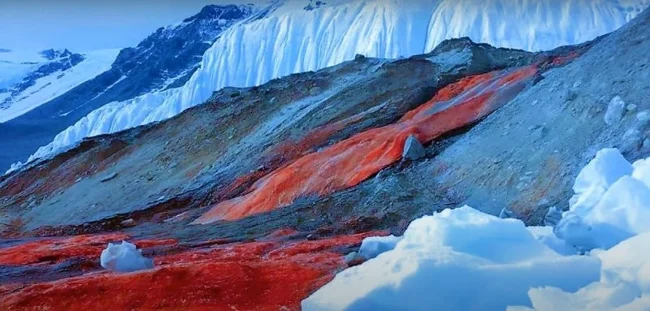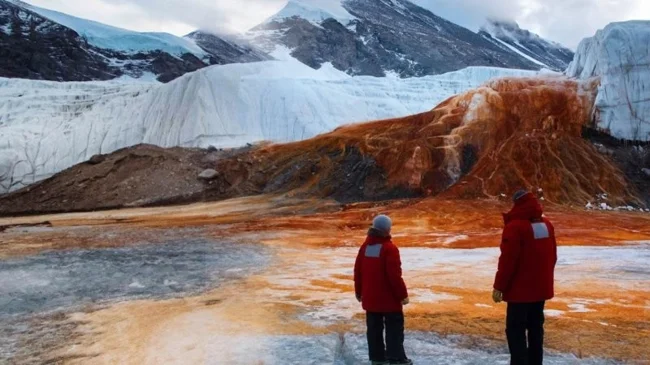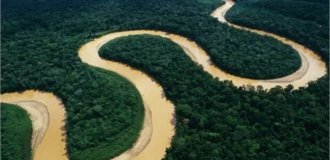Bloody waterfall: a lost world in the ice of Antarctica (8 photos)
In the McMurdo Dry Valleys of Antarctica, a blood-red waterfall slowly trickles down from a glacier. When it was first discovered in 1911, scientists thought the color was due to algae. But the reality turned out to be much more interesting. 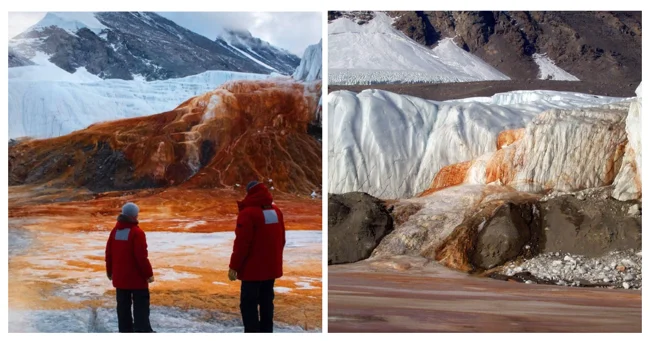
Time capsule with "alien" life 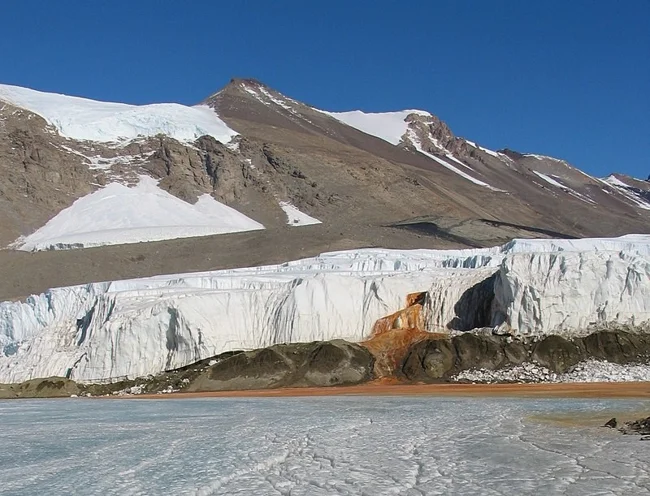
About 2 million years ago, the Taylor Glacier sealed a small lake with ancient microbes under itself. Since then, they have existed in complete isolation:
- there is no light or oxygen;
- eternal severe cold reigns;
- highly salty water with a high iron content is concentrated (it gives the water a bloody color).
This ecosystem is a kind of primeval broth that evolved separately from all life on Earth. 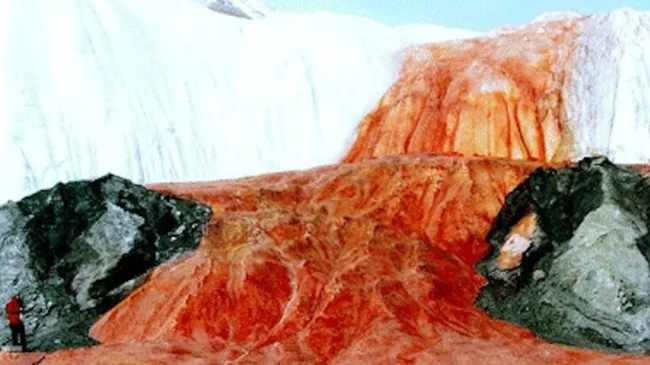
There is a crack in the glacier through which water comes out, but the lake itself remains sealed. Scientists compare it to a test tube that is open on only one side.
Can such microbes live on Mars? 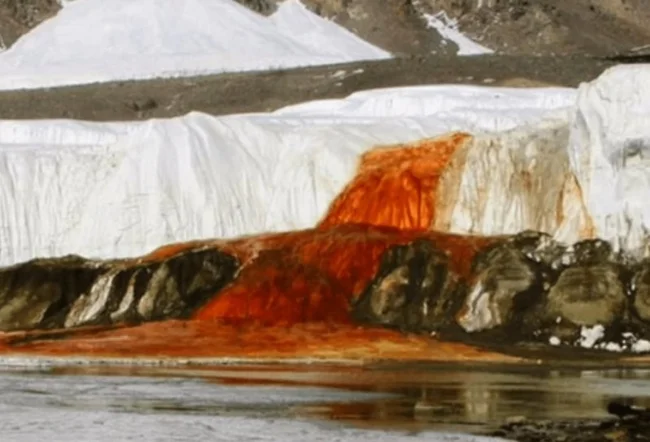
While Blood Falls proves that life is possible in extreme conditions, it does not mean that it exists on other planets. For example, on Mars or Europa (a moon of Jupiter), life must have arisen in a completely different way. 
But even without aliens, this miracle of nature amazes with its incredible, mesmerizing, otherworldly appearance and the ability of microorganisms to survive in icy casemates for millions of years. Scientists have analyzed the reasons why water does not flow out of the ice all the time. It turned out that the presence of salt in the solution significantly lowers the freezing point and causes heat to be released. This leads to an increase in the temperature of the surrounding ice, which allows salt water to occasionally reach the surface of the so-called ice tongue and form bloody waterfalls. 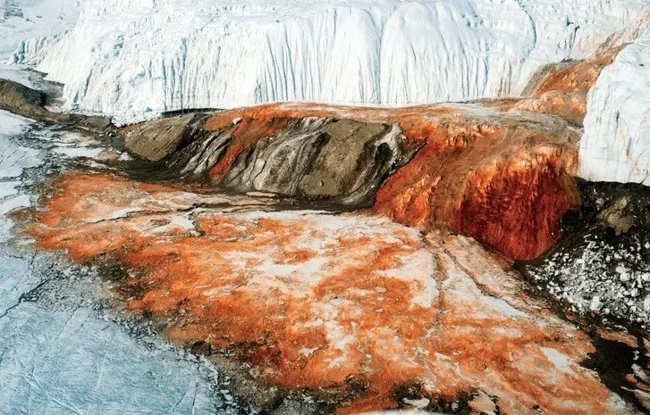
Even if it does not confirm the existence of extraterrestrial life, the Blood Falls in Antarctica is a wonder worth seeing. And it is also another reminder to humanity that there are still many mysteries on Earth that have yet to be solved. 